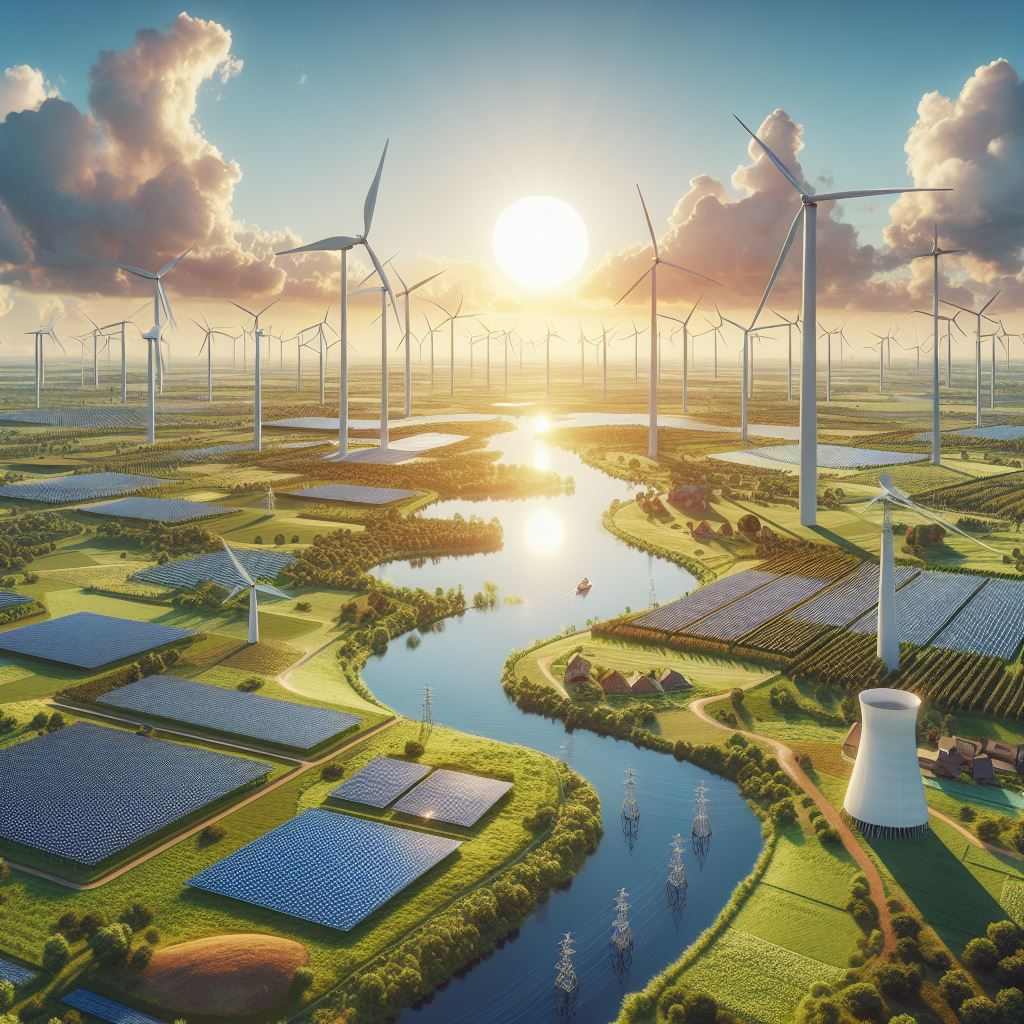What is renewable energy?
Renewable energy is derived from endless resources, such as the sun and wind. These resources are everywhere and always available.
Fossil fuels are distinct because they take a very long time to form and eventually run out. Examples include coal, oil, and gas. Carbon dioxide and other harmful gases are released when we use them as energy.
When using renewable energy, fewer harmful gases are produced than when using fossil fuels. To stop the climate crisis, renewable energy must replace fossil fuels.
These days, renewable energy is more affordable and generates more jobs than fossil fuels in many areas.
Renewable energy sources:
- Solar power is energy from sunlight.
- Wind energy is the result of wind movement.
- Hydroelectric power derives from the flow of water.
- Geothermal energy is heat originating from the crust of the earth.
- Biomass is the organic material derived from plants and animals that is converted into energy.
- Hydrogen fuel is a fuel that can produce electricity.
- Ocean energy: thermal and mechanical energy from the ocean.
These sources are sustainable and constantly replenished, making them a clean alternative to fossil fuels.
Let’s compare renewable and non-renewable energy sources
| Aspect | Renewable Energy Sources | Non-Renewable Energy Sources |
| Depletion | cannot eventually run out. The sun, wind, and tidal energy are a few examples. | deplete gradually. Examples include rare minerals (usually found in meteorites) and fossil fuels (coal, oil, and natural gas). |
| Sources | Light, water, wind, and geothermal energy sources (such as fumaroles and hot springs). | fossil fuels (petroleum, coal). |
| Impact on the Environment | minimal carbon footprint and emissions. | increased emissions and carbon footprint. |
| Costs | high initial cost (wind turbines, solar panels, etc.). more expensive to generate electricity than fossil fuels. | reduced initial expenses for non-renewable energy. |
| Buildings and Infrastructure | In most nations, it is costly and difficult to obtain. | Infrastructure for non-renewable energy that is affordable and easily accessible. |
| Location Specifications | Large land or offshore areas are necessary for wind and solar farms, for example. | comparatively smaller space needs. |
It is interesting to note that some resources, like uranium, are contested as renewable because of their long-term availability, although this is still up for debate. In comparison to fossil fuels, renewable energy sources—such as solar, wind, hydroelectric, and geothermal energy—offer sustainability and lower greenhouse gas emissions.
Benefits of renewable energy sources.
There are many benefits to using renewable energy. It first aids in the reduction of harmful carbon emissions and air pollution brought on by the production of energy. Our electrical grid becomes more dependable, safe, and resilient as a result. By reducing reliance on energy from other nations, it strengthens Indian energy independence. It might result in cheaper energy bills for end users. Lastly, it gives isolated, coastal, or remote communities access to energy. All things considered, renewable energy benefits the economy, the environment, and the populace!
By lowering greenhouse gas emissions that contribute to climate change, renewable energy benefits the environment and protects the planet for future generations. Economically, it promotes business expansion and job creation, particularly in the manufacturing of wind turbines and solar panels, keeping money in the local economy and possibly generating millions of jobs in nations like India. Another benefit is energy independence, which shields nations from shortages and price increases by lowering dependency on imported gas and oil. Renewable energy sources, such as the sun, wind, and water, have an endless supply, guaranteeing an endless supply of energy. Consumer costs are coming down as renewable energy becomes more economical and efficient, thanks to technological advancements. Last but not least, there are substantial health advantages since clean energy lowers air pollution, enhancing general health and wellbeing. To put it simply, the future of sustainability, prosperity, and health depends on renewable energy.
Conclusion
As we can see, there are more benefits to using renewable energy sources than to using non-renewable energy sources. Hence it becomes necessary for the world to shift to renewable energy sources.


